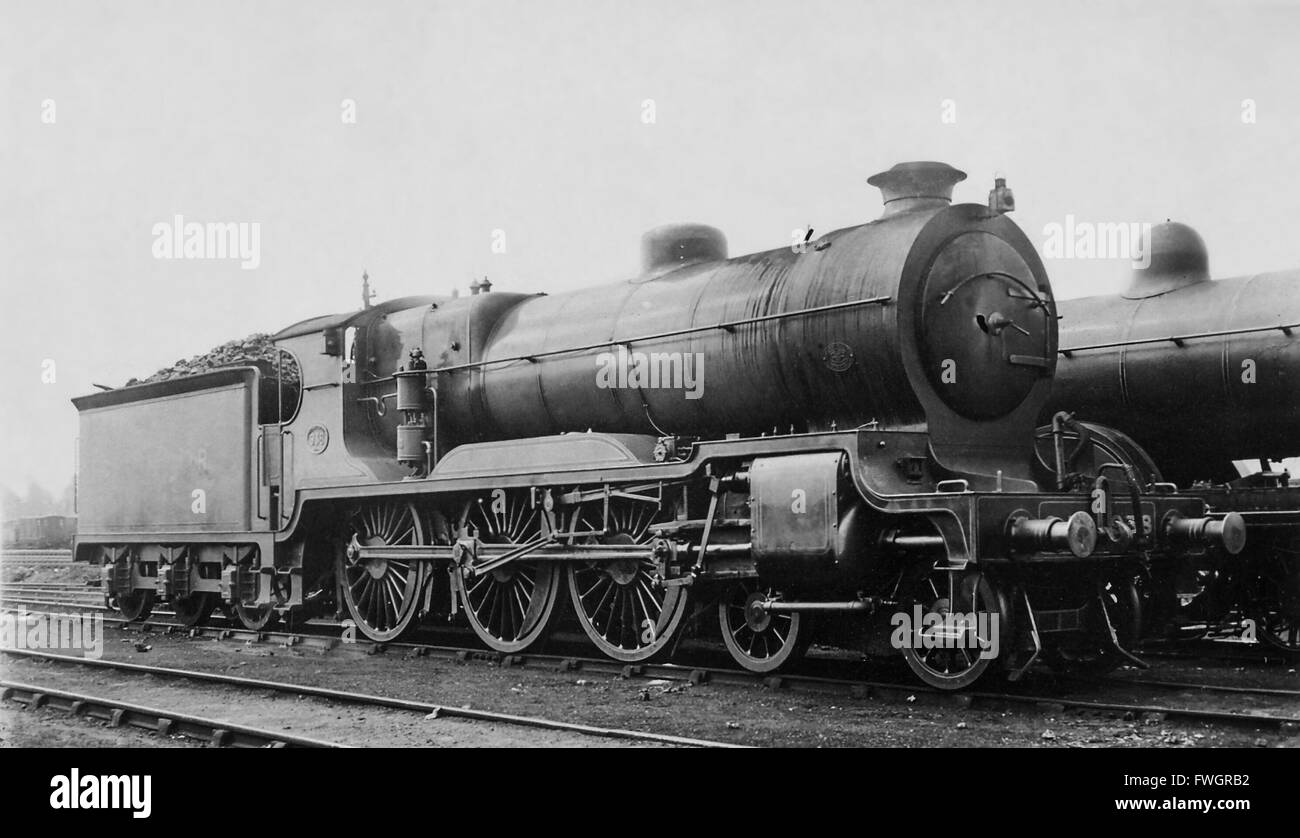Caledonian Railway 4-6-0 River Class Steam locomotive 938

Image details
Contributor:
Digbydachshund / Alamy Stock PhotoImage ID:
FWGRB2File size:
13.7 MB (366.2 KB Compressed download)Releases:
Model - no | Property - noDo I need a release?Dimensions:
2885 x 1661 px | 24.4 x 14.1 cm | 9.6 x 5.5 inches | 300dpiDate taken:
1920Location:
UnknownMore information:
This image could have imperfections as it’s either historical or reportage.
The Highland Railway River class was a class of steam locomotive with a 4-6-0 wheel arrangement. They were designed by F. G. Smith, who had joined the Highland Railway in 1904 from the North Eastern Railway. The 'Rivers' were Smith's only design for the Highland Railway, and they were the largest and most powerful locomotives built for that company. This involved a deadweight driving axle loading of 17.75 long tons (18.03 t; 19.88 short tons), which exceeded the maximum axle loading allowed by the company's Civil Engineer. However, Smith had taken this into account, and had designed the 'Rivers' to cause much lower 'hammer blow' upon the track than the existing Highland locomotives. When the effects of hammer blow were taken into account, the 'Rivers' put the same total weight onto the track as the previous 'Castle' Class 4-6-0s. The first two engines arrived at Perth at the end of August 1915, & a row immediately erupted between Smith & the company's Chief Civil Engineer Alexander Newlands. Smith & Newlands had a difficult working relationship On delivery the locomotives were placed in a siding while the engineers checked the drawings. Once completed, Newlands banned themas being too heavy for a number of bridges & out of gauge. Smith argued that hammer blow should be taken into account, but the board sided with Newlands & Smith had to resign. The Highland managed to sell all 6 locomotives to the Caledonian Railway, & supposedly made a profit of £500 per engine. They were out of gauge to the 'Caley' as well but the modifications needed were slight & quickly made. In Caledonian service they proved reliable & were well liked by their crews, despite being outside-cylindered while the 'Caley' was an inside-cylinder line. They spent most of their lives on fast goods between Aberdeen & Carlisle. By the 1920s, hammer blow was better understood & they worked over the Highland Main Line. The last of the class was withdrawn in 1946. 938 was withdrawn in Oct 1939 as 14756